As one of the most corrupt developing nations in Asia, engulfed in a turbulent war until 1991, Siem Reap in Cambodia does seem like an odd choice for a vacation destination. But the gems it holds beneath the rough exterior is just too precious to miss.
Siem Reap, Cambodia houses the largest religious monument in the world.
The Ankor Wat Temple. The Temple is dedicated to Lord Vishnu and then later became a Buddhist Temple. Though i had read the
dimensions , imagined it quite a lot, nothing ever prepares you for the size and grandeur of the building. The moat itself threw me off with its 109m width which took me quite sometime to cross in the hot sun. The water in the moat plays an important role in holding the Temple in place. If the moat water recedes, the Temple will collapse. They had some clever architecture in the older times!
 |
| The Temple is surrounded by moats on all four sides |
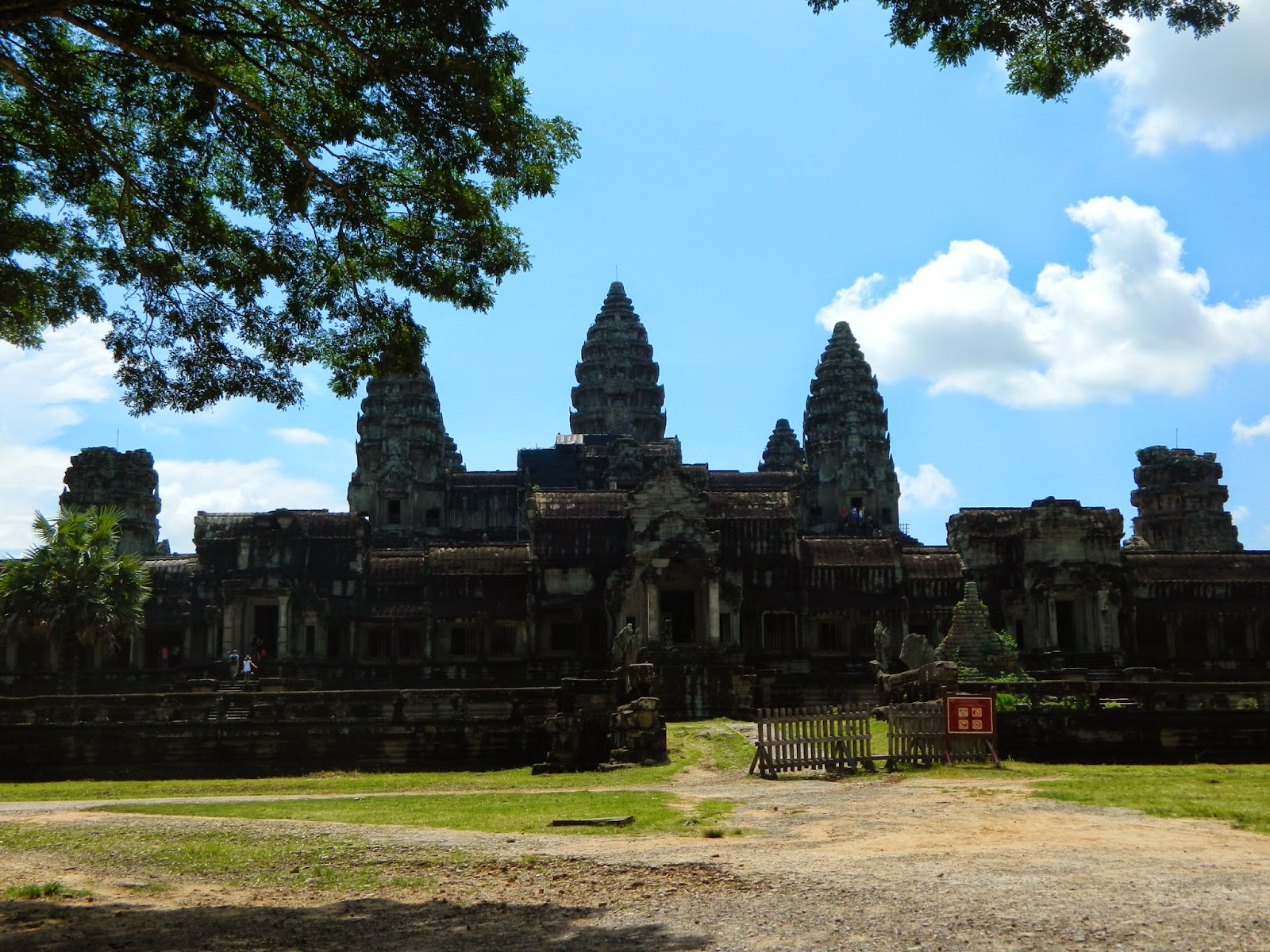 |
| Back Entrance to the massive structure |
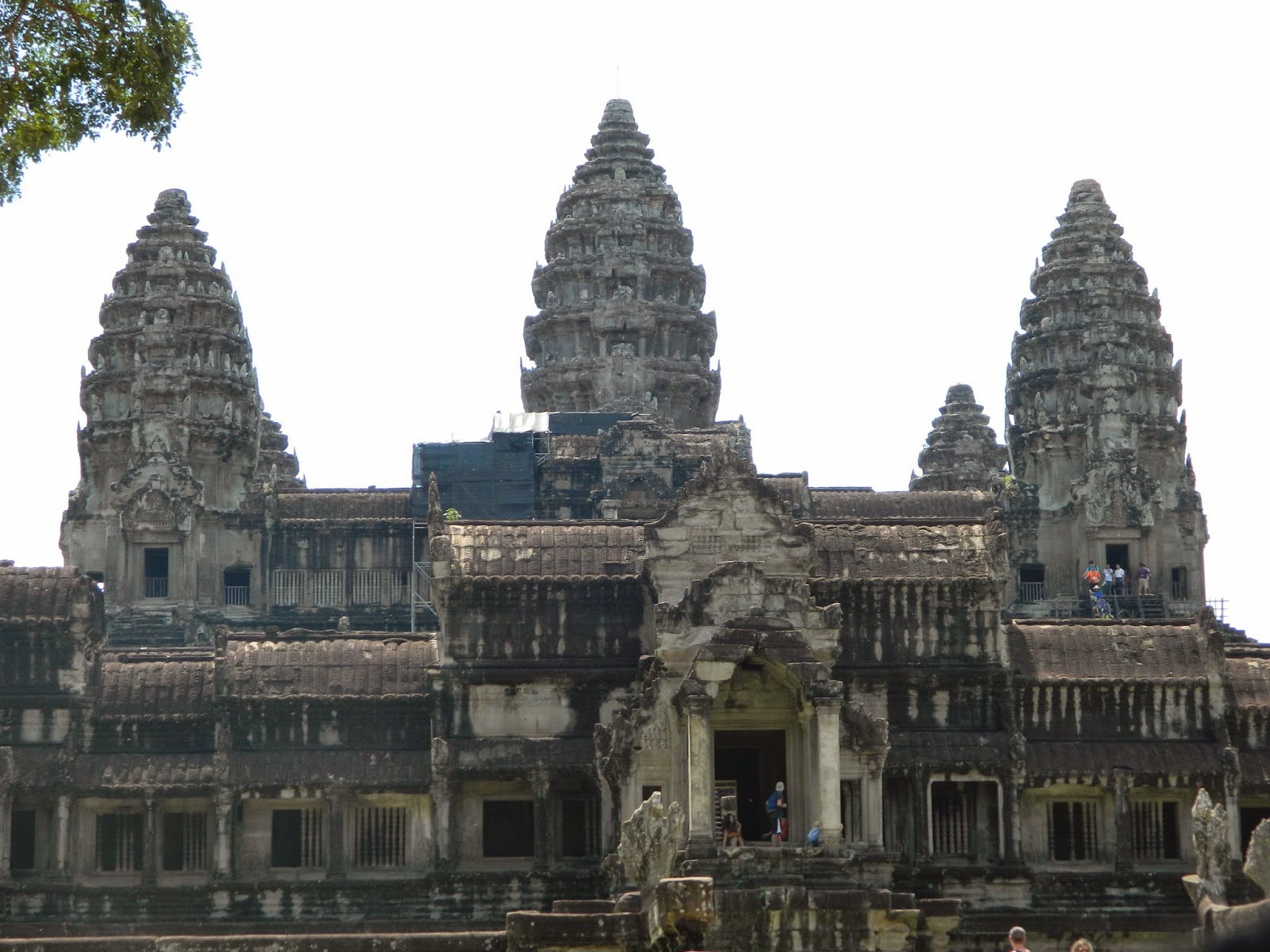 |
| Upper galleries of the Temple. There is a law prohibiting any other structure to be more taller than the 65m which is the height of the Temple. |
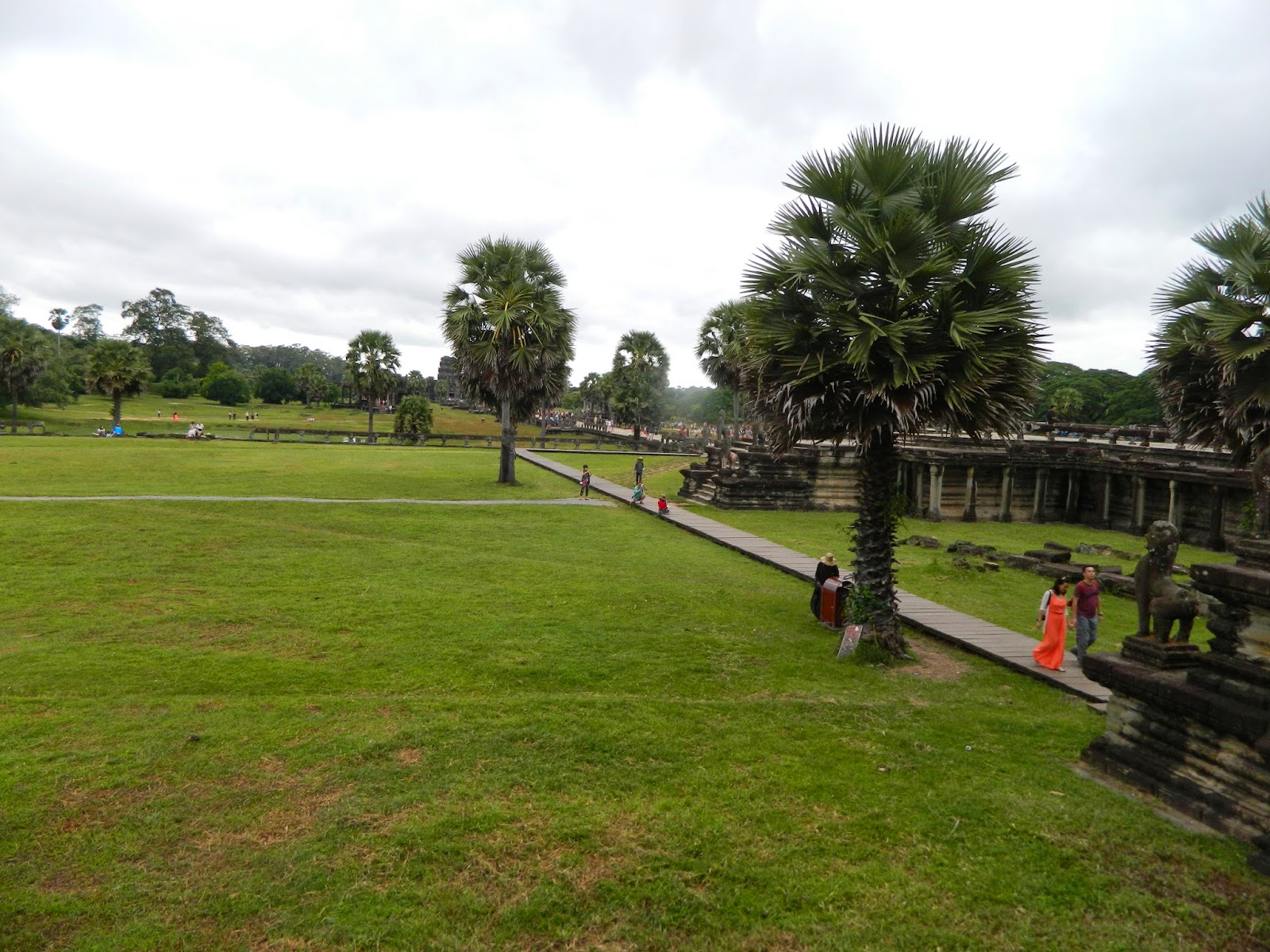 |
| Open grounds at the Angkor Wat Temple |
Walk, walk and more walk - mantra at the Angkor Wat!
It was a very interesting experience to try and catch the sunrise from the temple. It was 4:20 AM when we reached the moat. We were welcomed to officials holding torches and checking our ID. Later, when we crossed the moat and reached the Temple itself, we were greeted to candles glowing in selected places. UNESCO has not made electricity available in the Temple to protect it. Because of this, the Temple is closed every day around 5:30PM. I wish i had read about this somewhere before searching frantically to catch a night time/ariel view of the temple from the flight at about 2AM Korean time :( Anyway, i missed getting the special sunrise shot because it was cloudy that one day i made up mind to breathe in the 4 AM air.
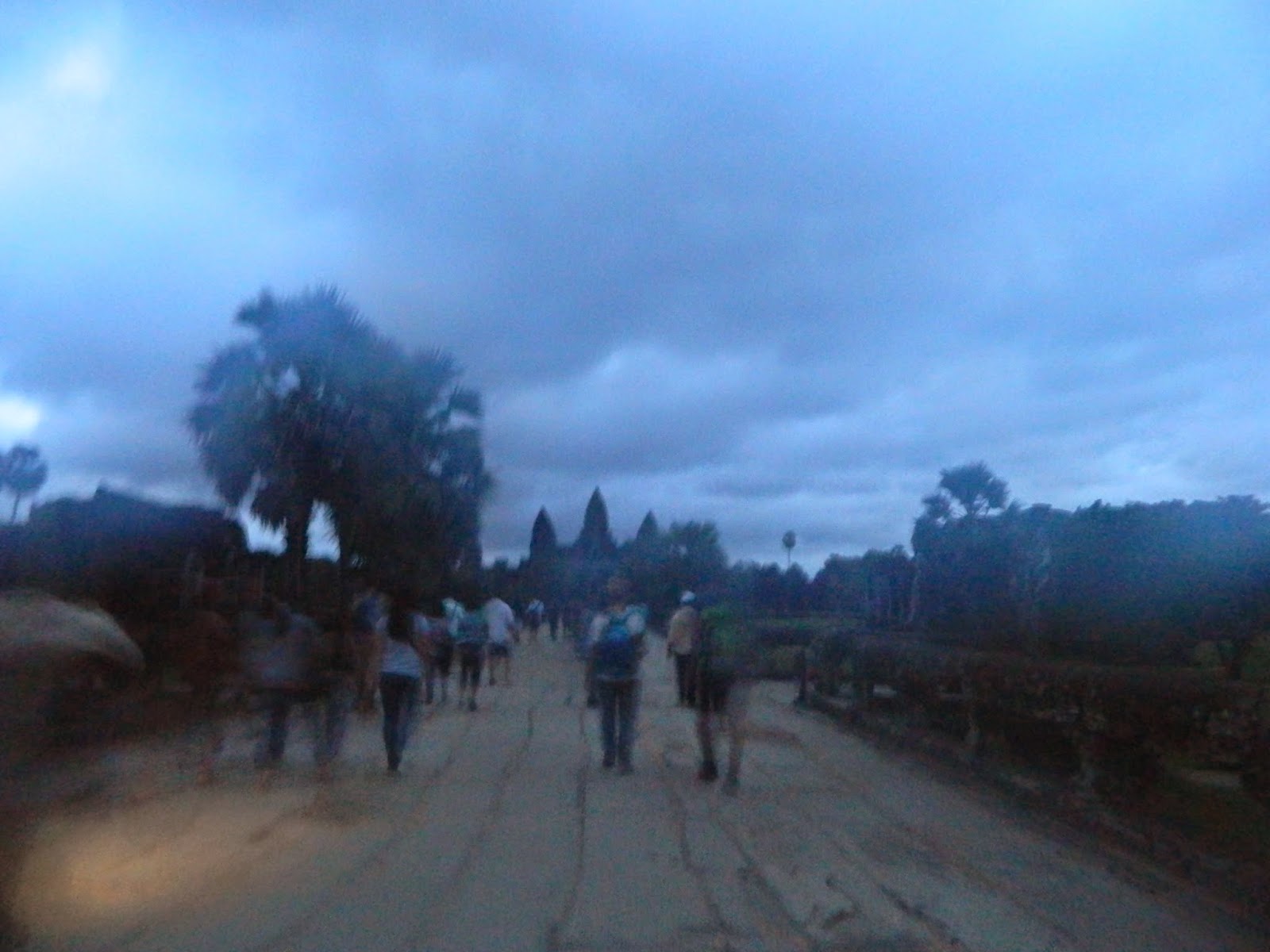 |
| On the way to see a cloudy sunrise |
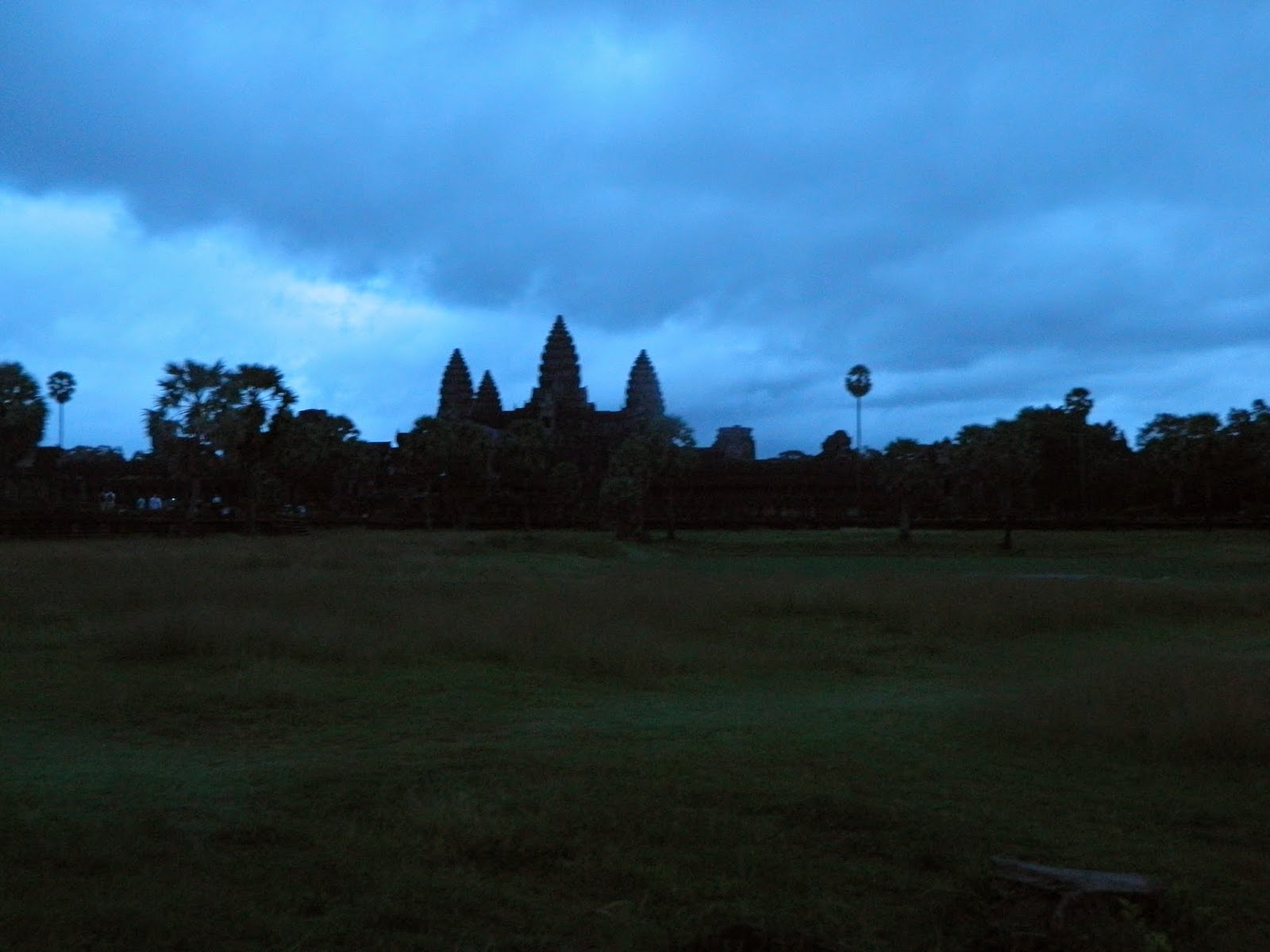 |
| Making the best use of a cloudy 4 AM |
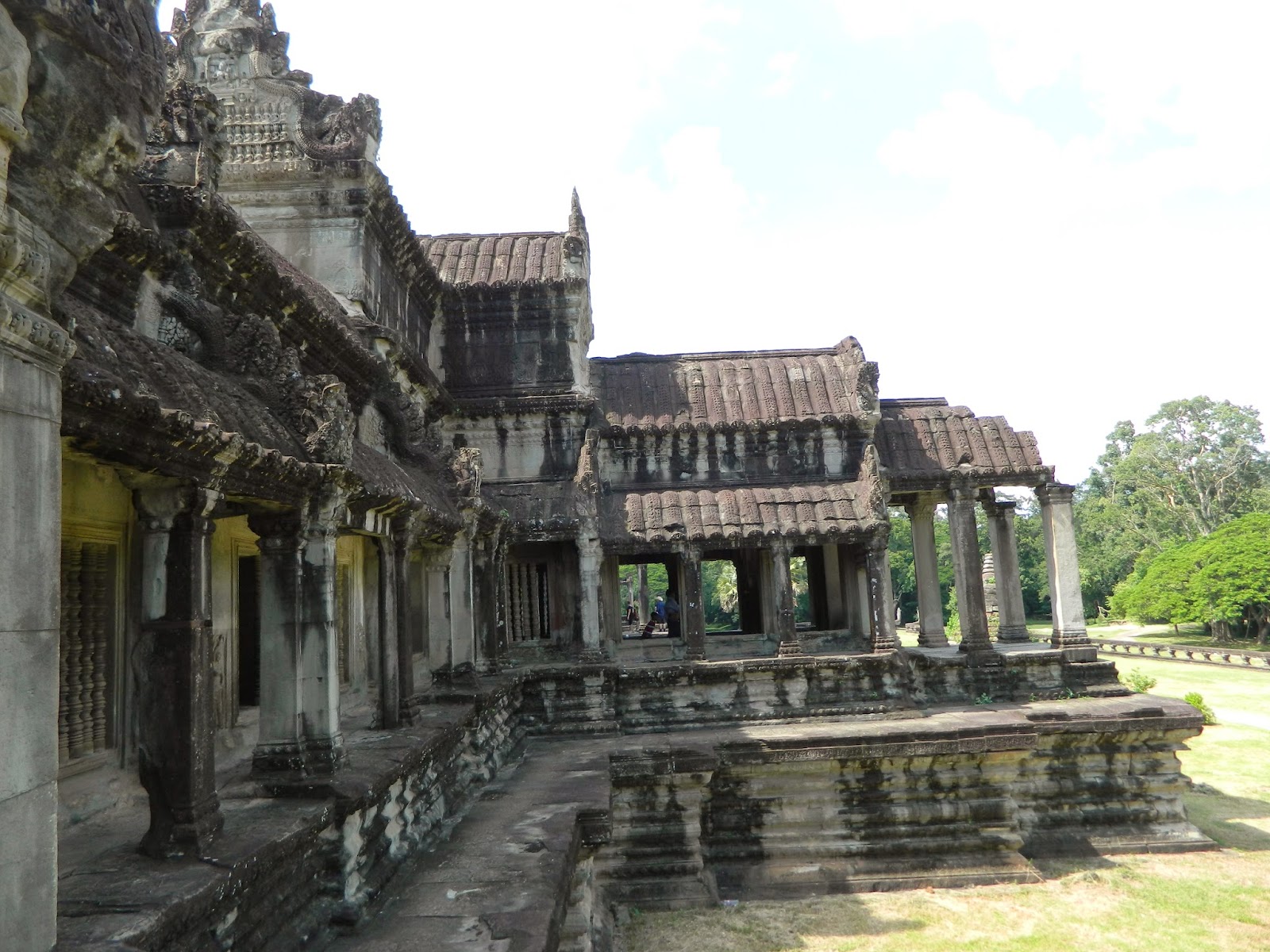 |
| The gallery in the Angkor Wat |
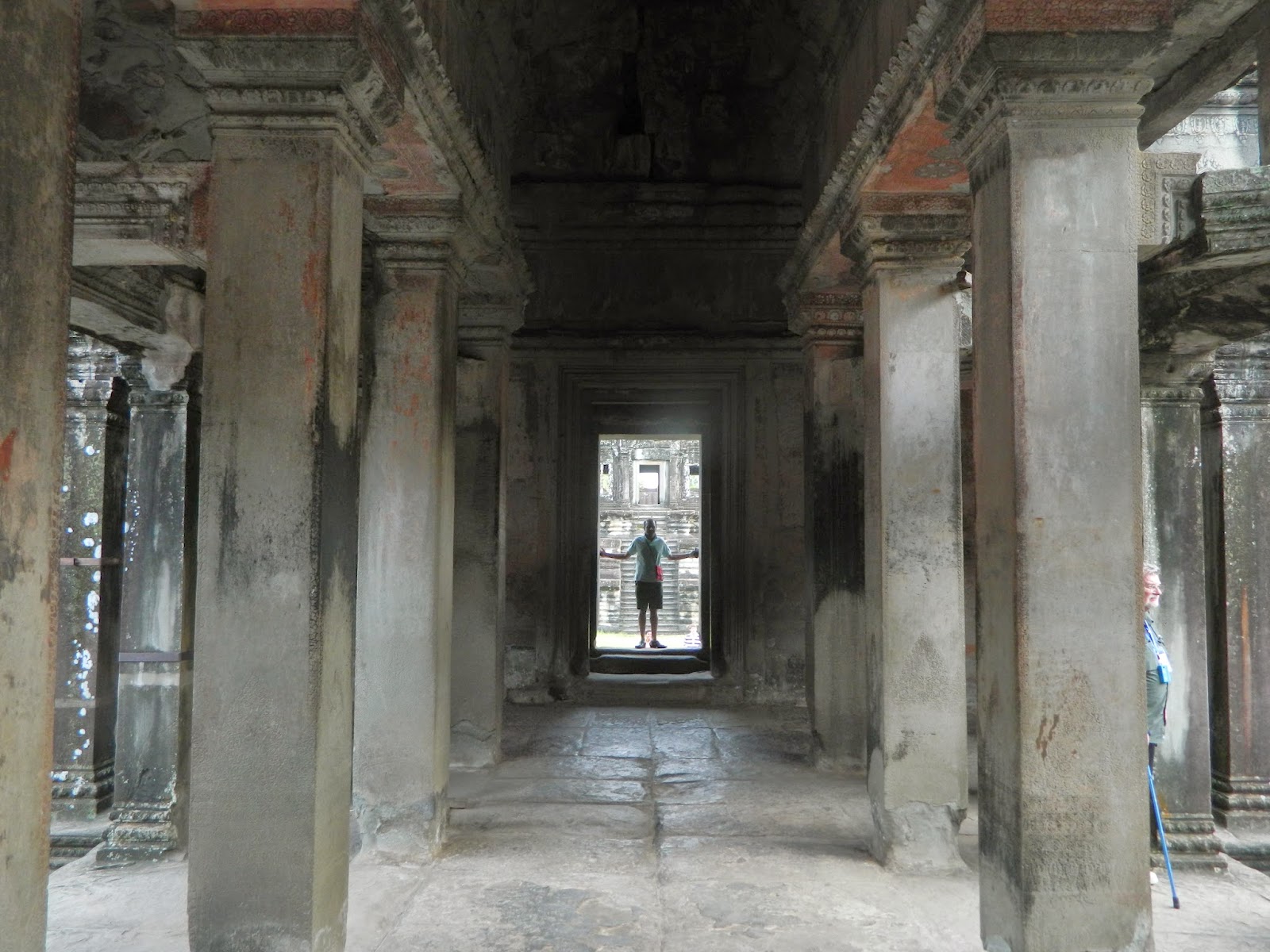 |
| The Temples are grand but the pillars are bare |
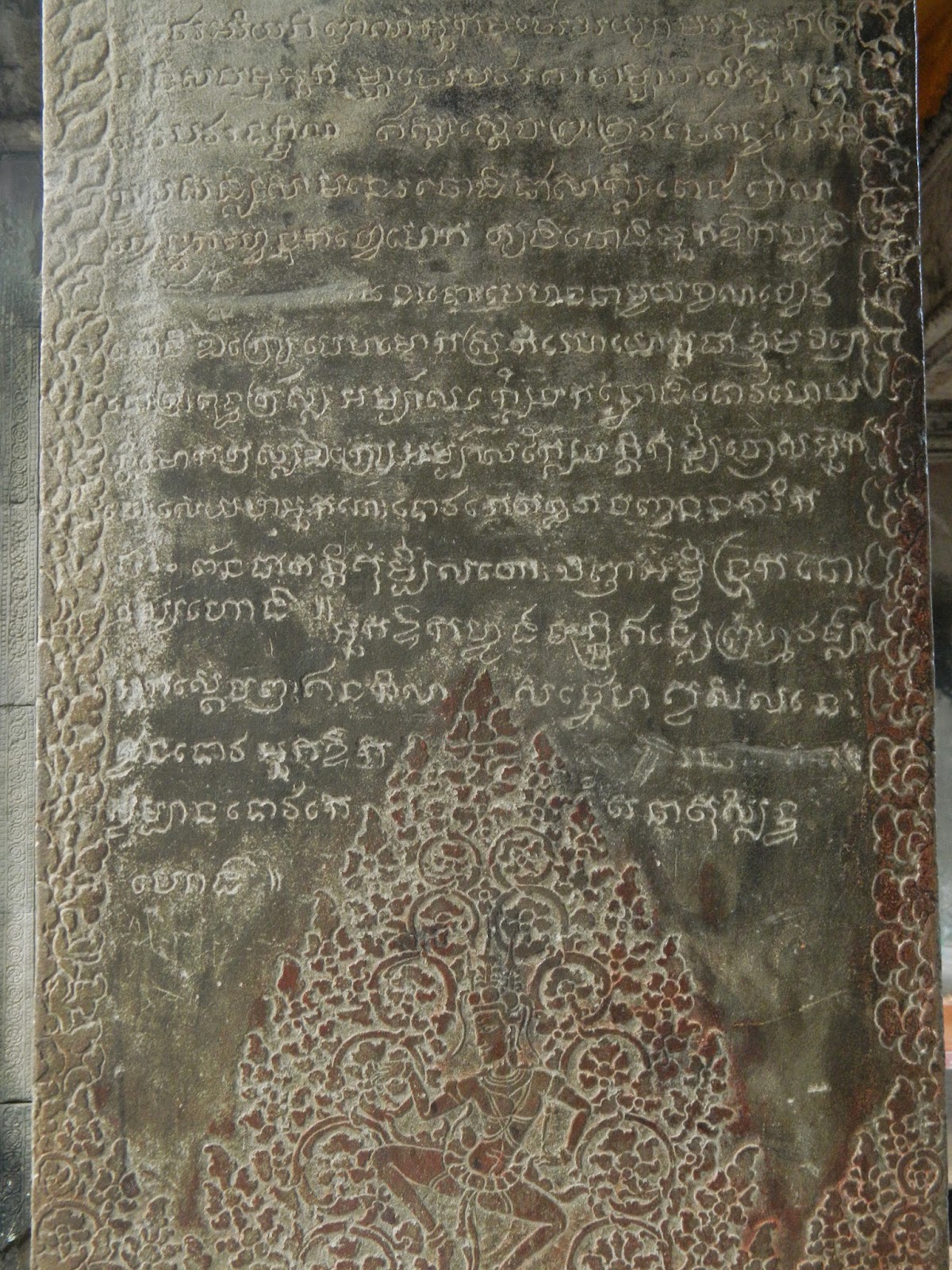 |
| Sanskrit on the walls of the Temple |
The Temple is built with sandstone cut and brought here from Kulen mountains that is a good 55kms from this place. They used bamboo and elephants to build it. The carvings are done are superficial and not so deep and even unfinished in a lot of places. Is it because they had to do a lot of carvings that they did not give in their 100%? "I am sure his mom was not around when he was building this one" quips my son rolling his eyes!
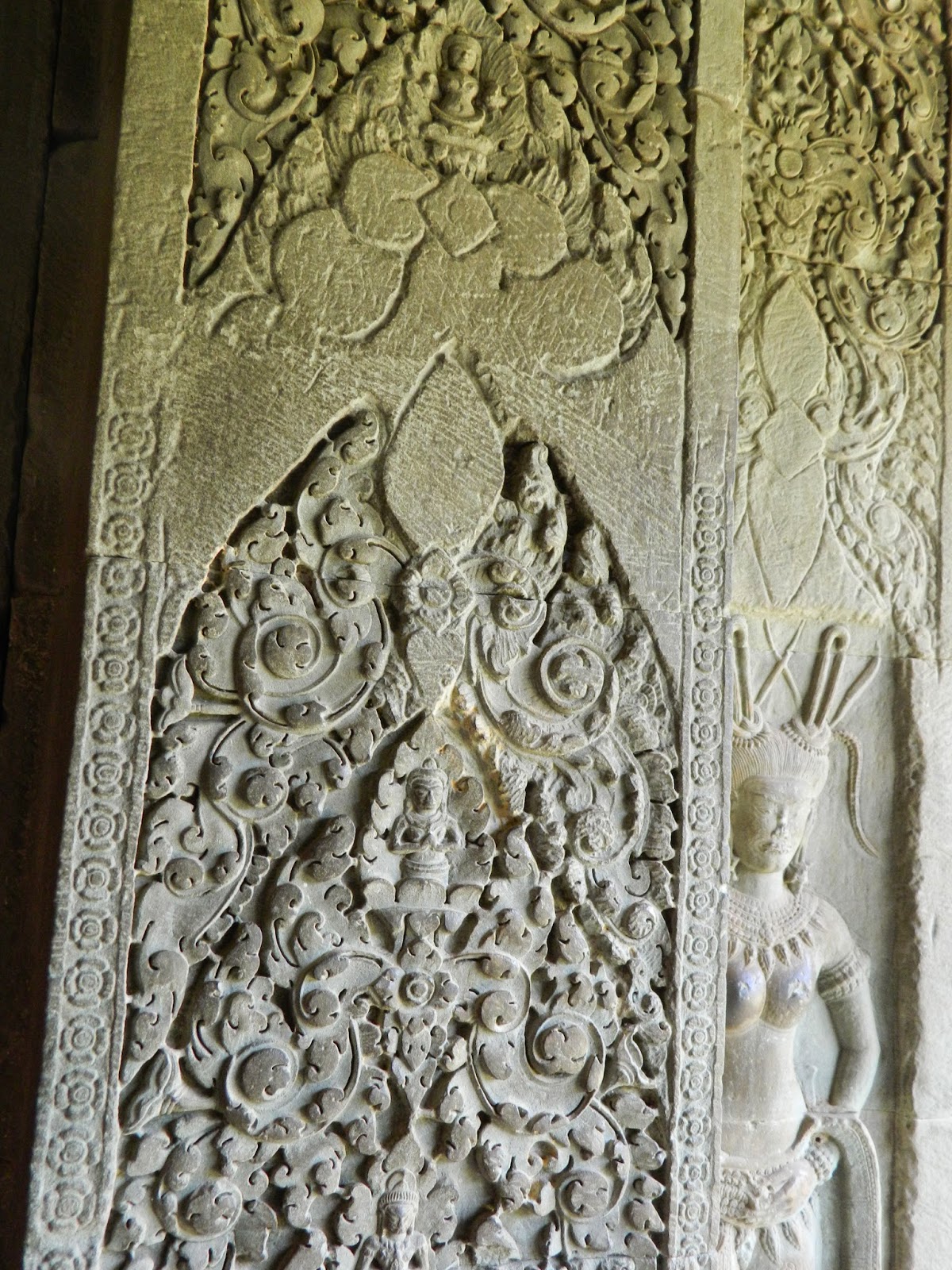 |
| Unfinished and superficial but elegant carvings in the Angkor Wat Temple |
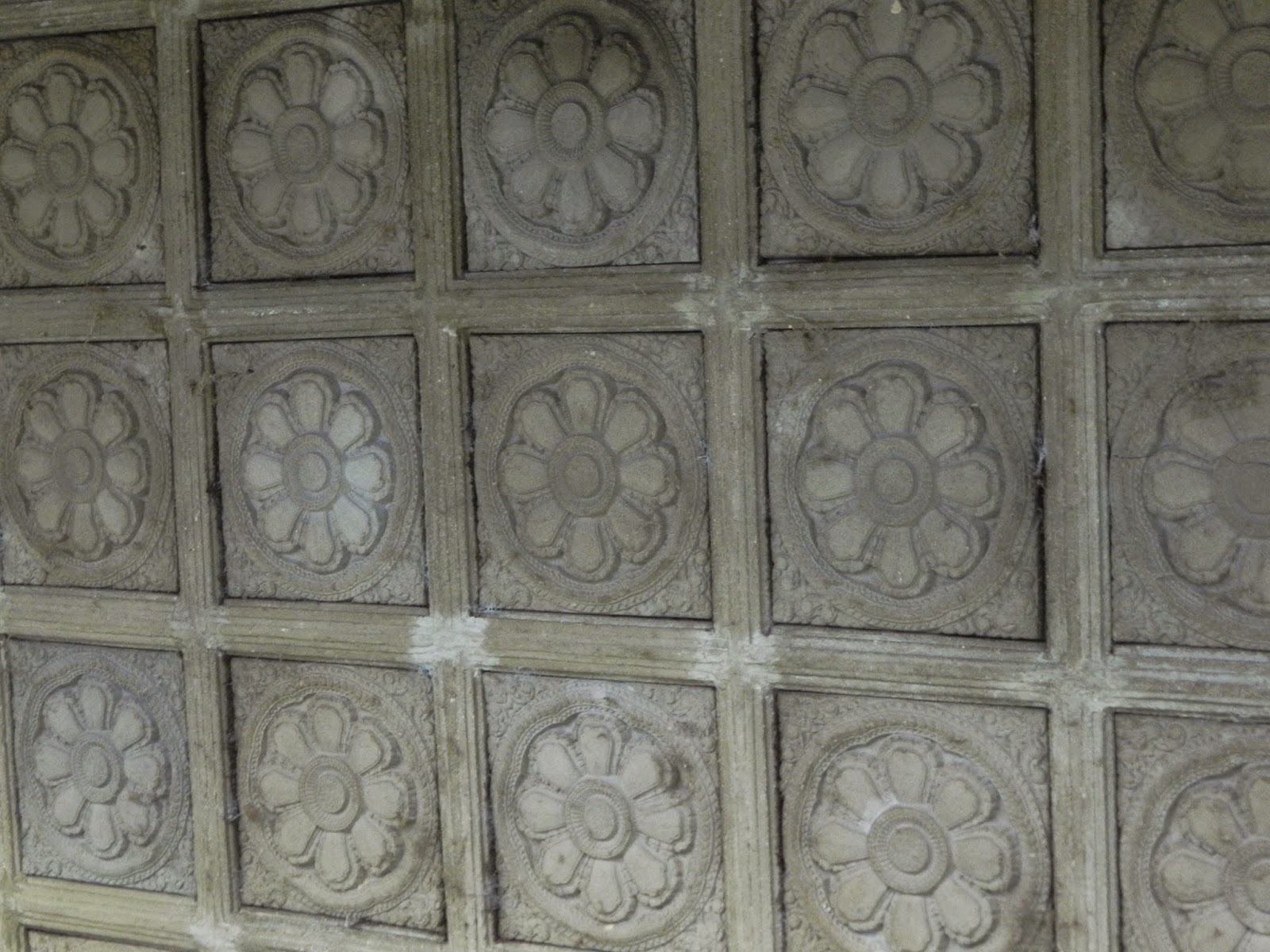 |
| Carved lotus on the ceilings of the Angkor Wat Temple |
The carvings on the Temple were from the epics of India- Ramayana and Mahabharata including the battle between Vali and Sugreeva, the Kurukshetra war and also many Indian deities. There was a huge relief from the churning of the ocean for the nectar. This seemed to be a popular legend among the Khmer people as this legend is depicted in a lot of other places in Siem Reap. Then there were also carvings from the war campaigns of the then king Suryavarman II and also the daily life of the people.
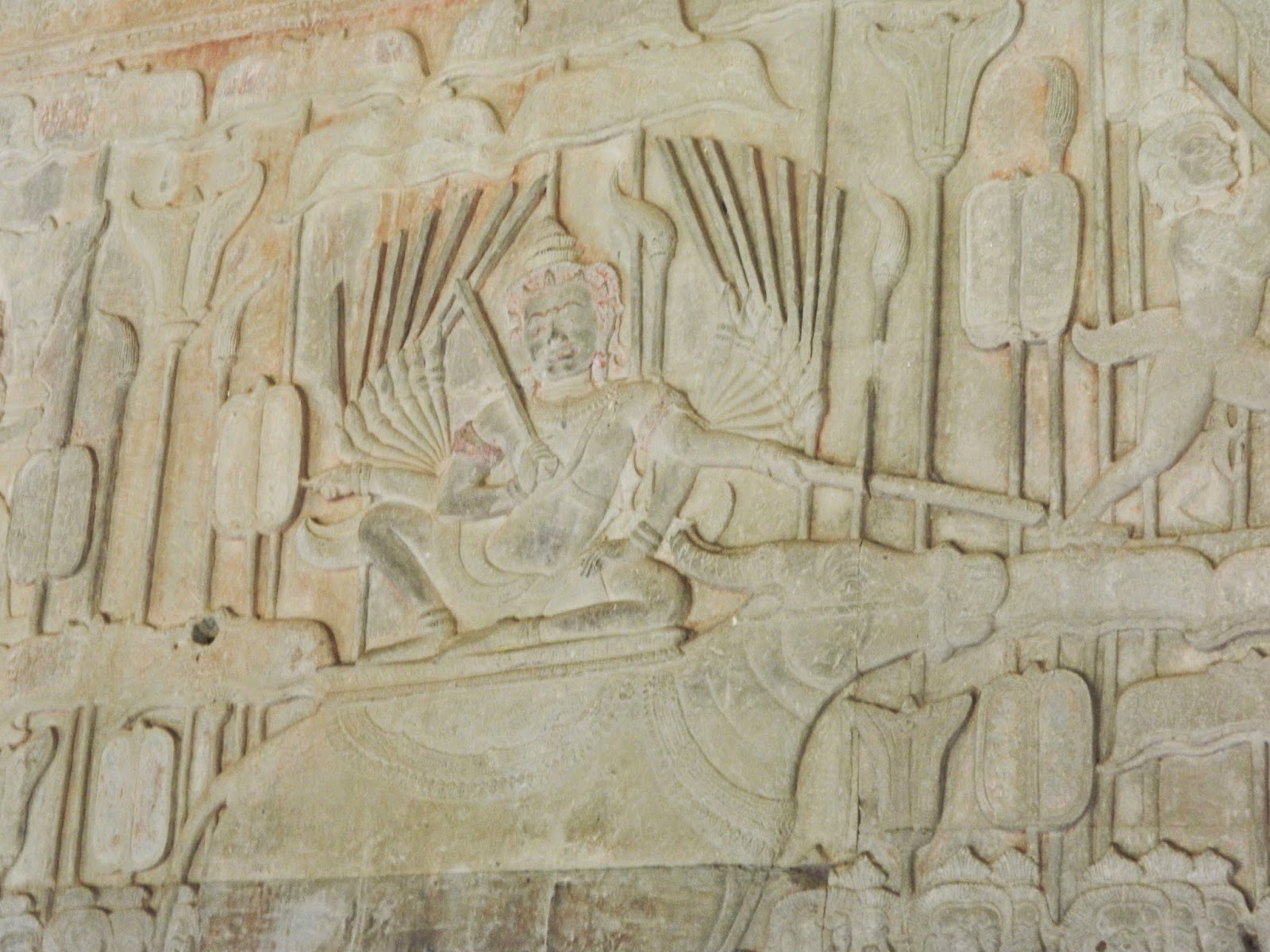 |
| God of Death, Yama on the walls of the Angkor Wat |
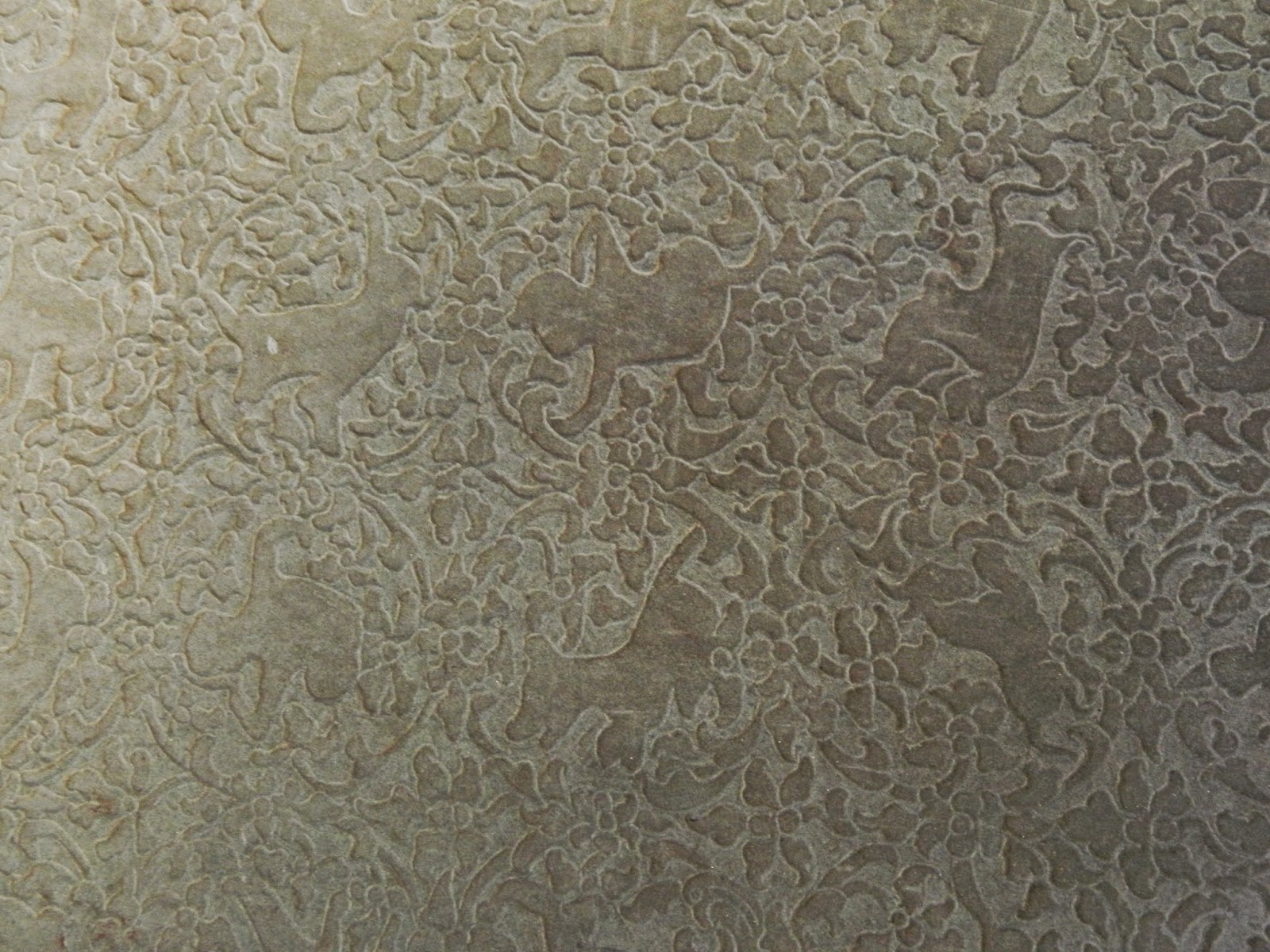 |
| Beautiful carvings of lotus on the walls of the Temple |
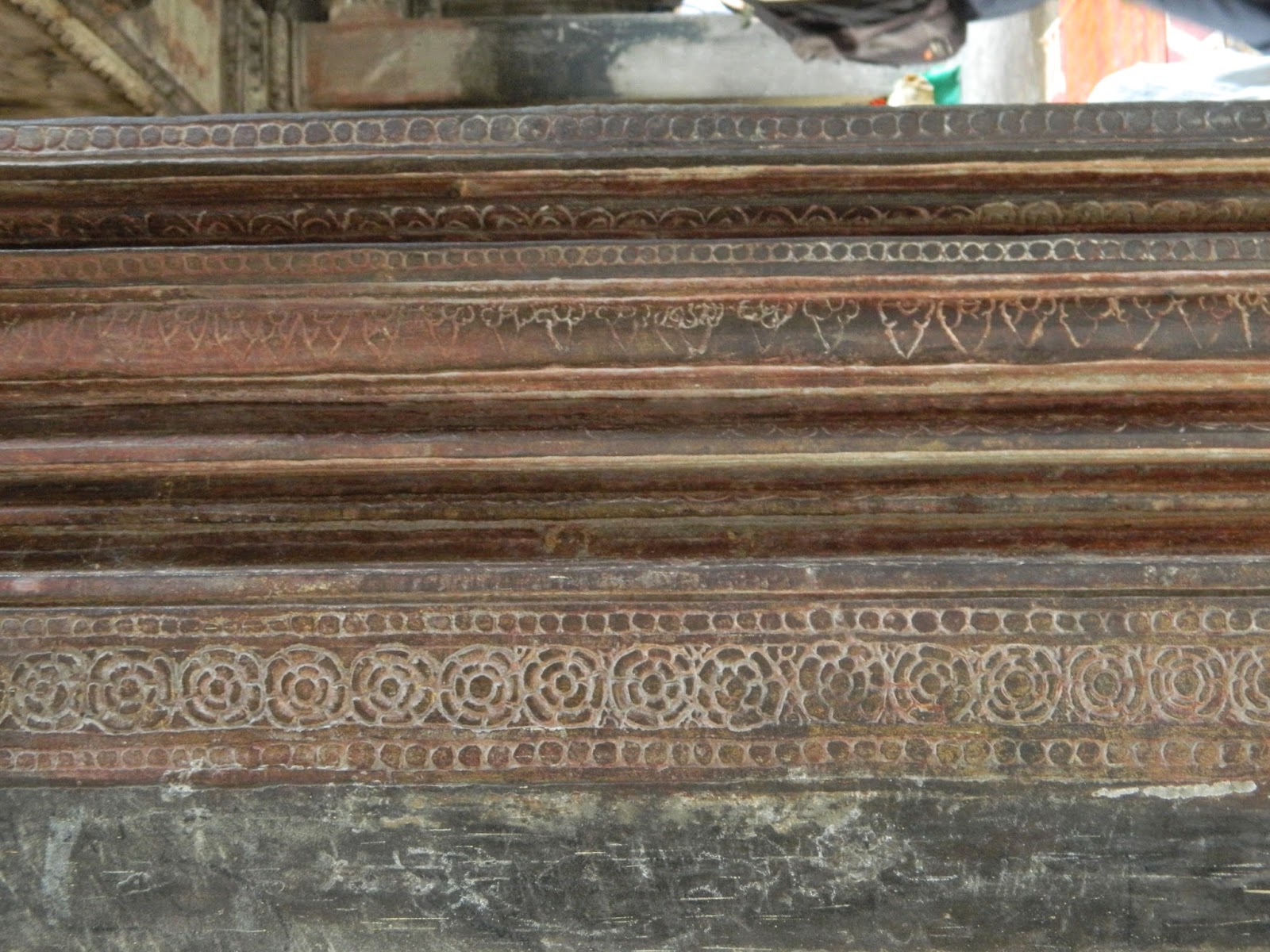 |
| Unfinished carvings |
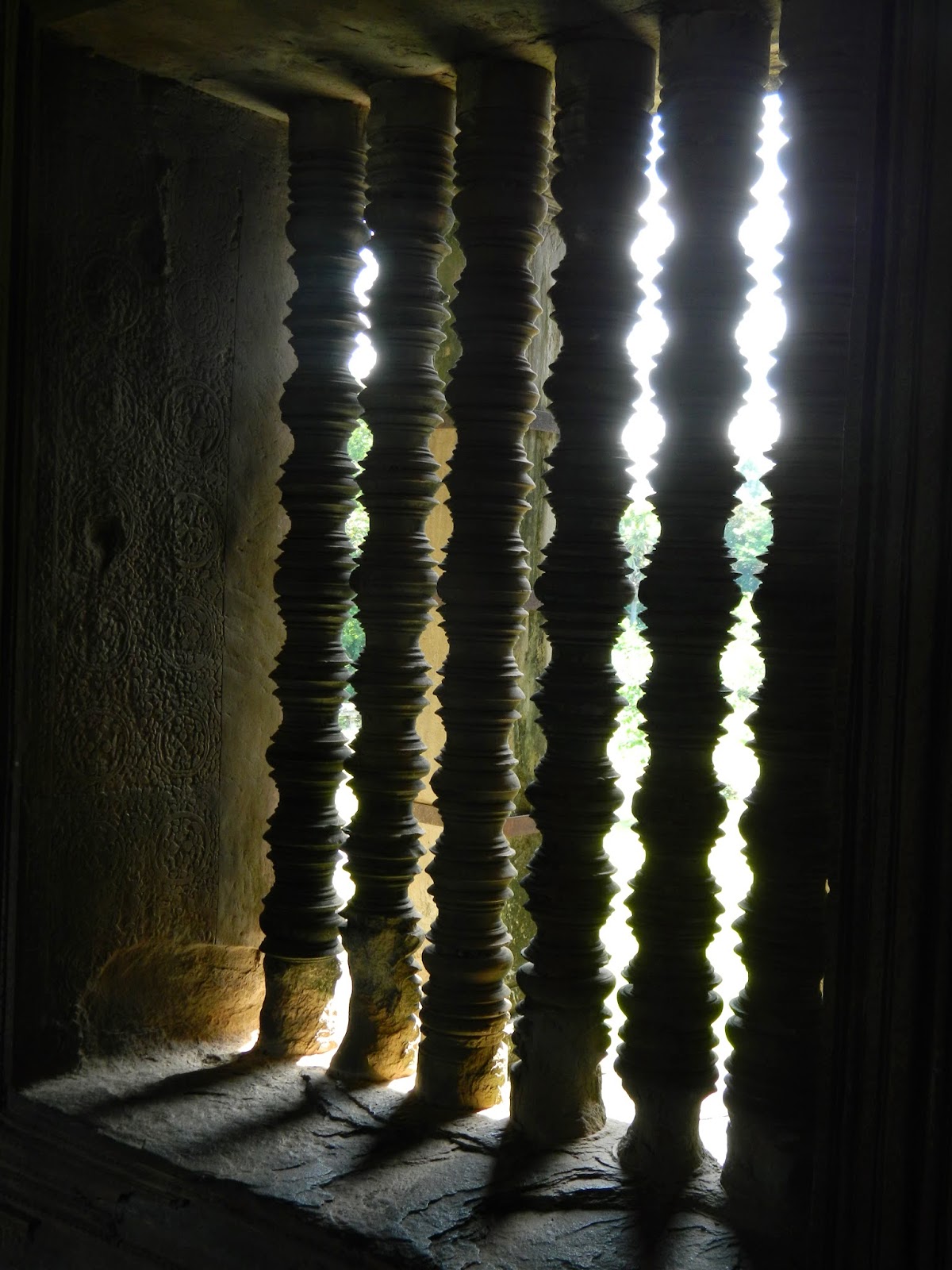 |
| Beautiful carvings on the window |
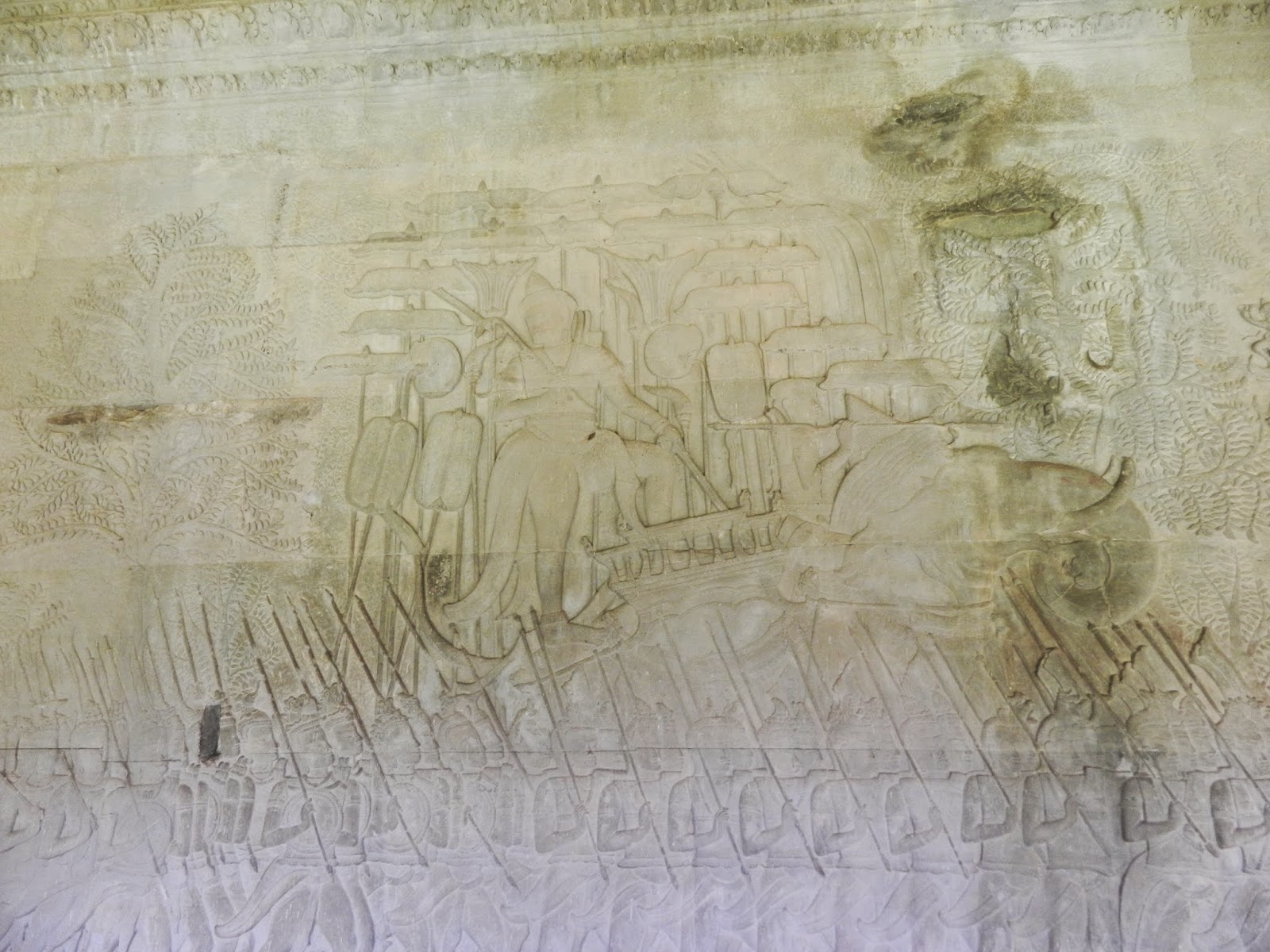 |
| Ramayana on the wall- King Rama |
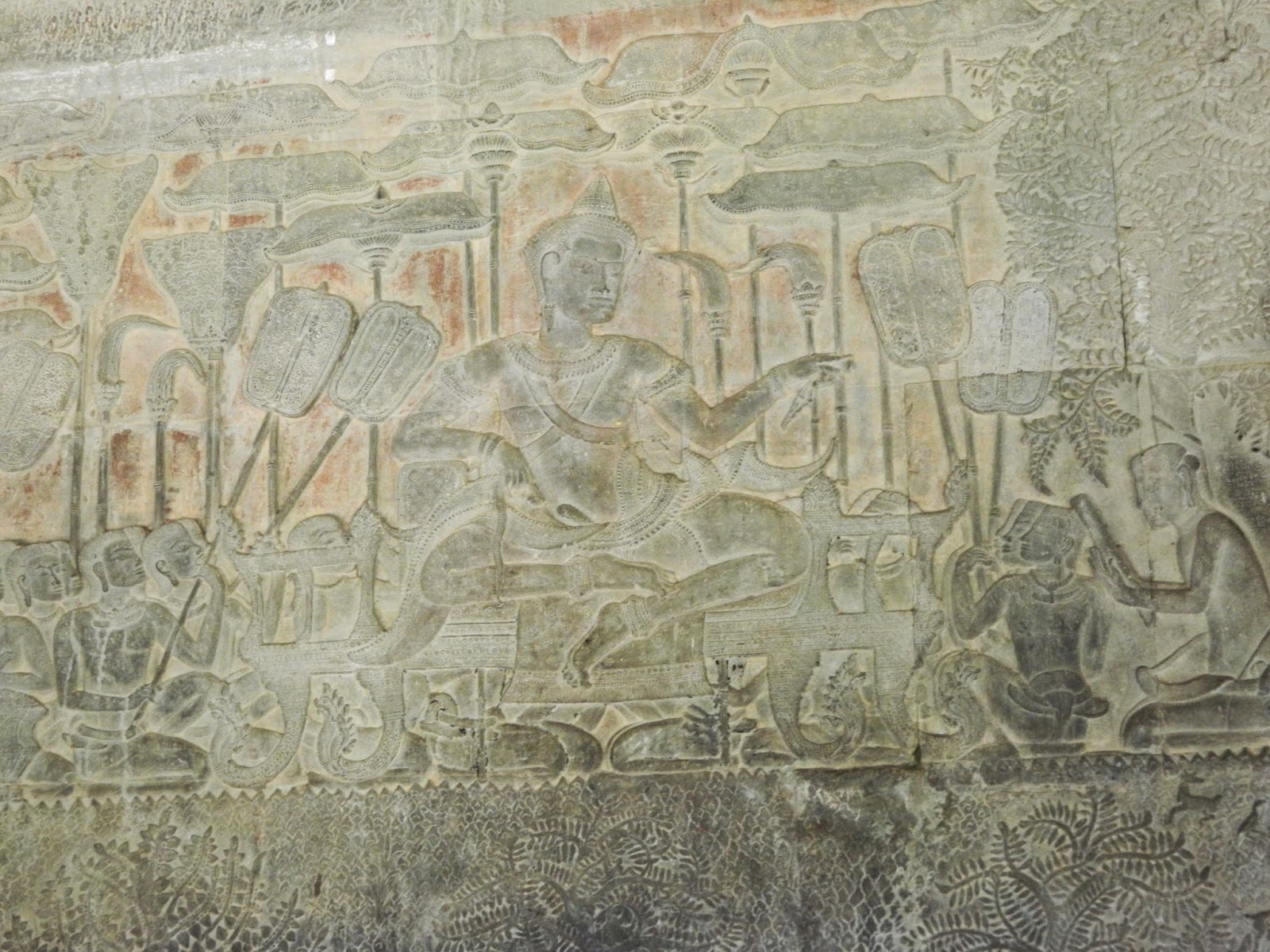 |
| Suryavarman II - The king who built this largest religious monument in the world. |
The Temple was built in the 12 century is not in great shape and has been protected by the UNESCO World Heritage and has been under the renovation by the Archaeological Survey of India. The Temple structure still holds but there were many places where we could see ruins.
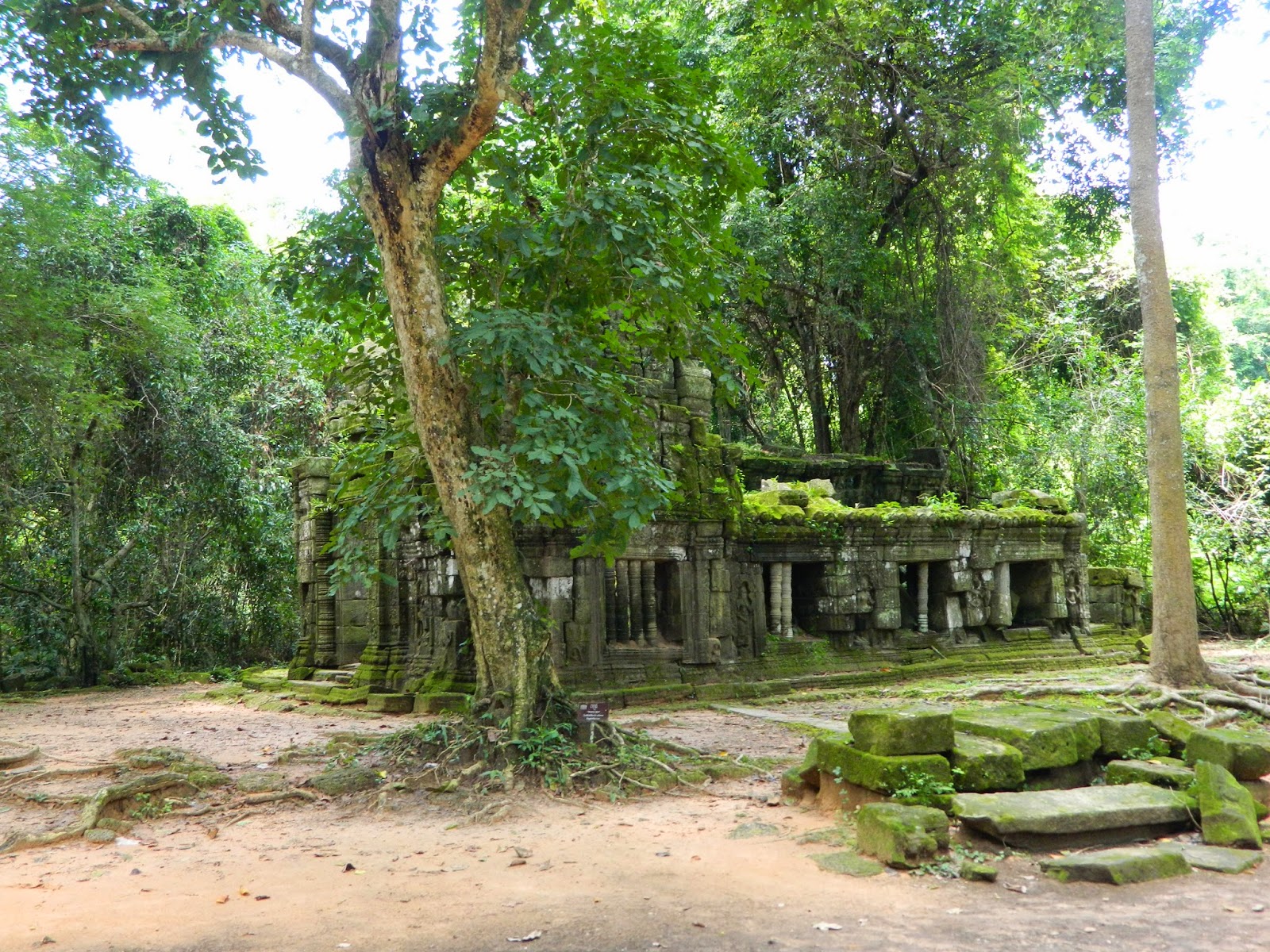 |
| Ruins near the temple |
 |
| Sandstone and volcanic rock in ruins near the temple |
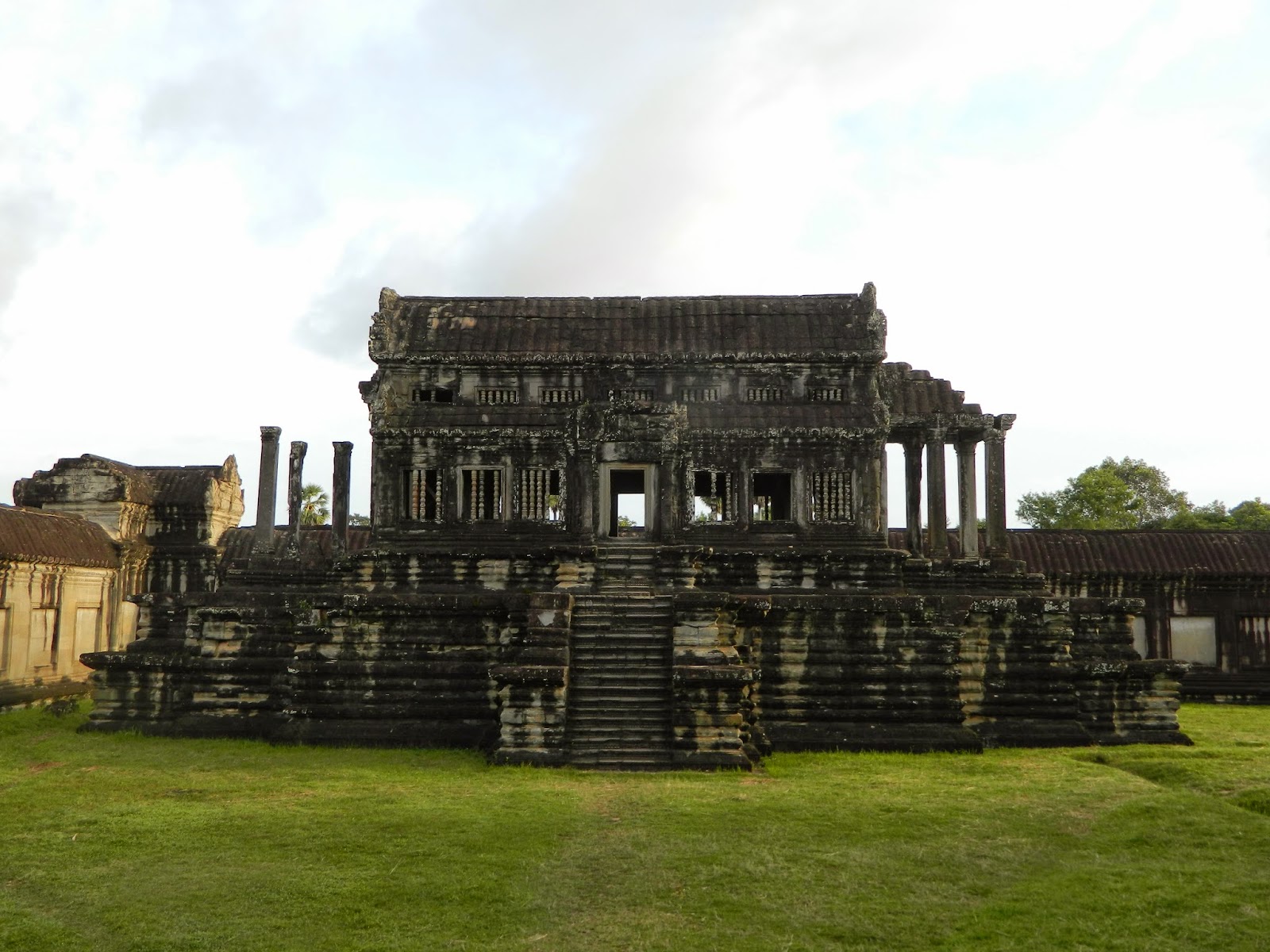 |
| More ruins close to the Temple |
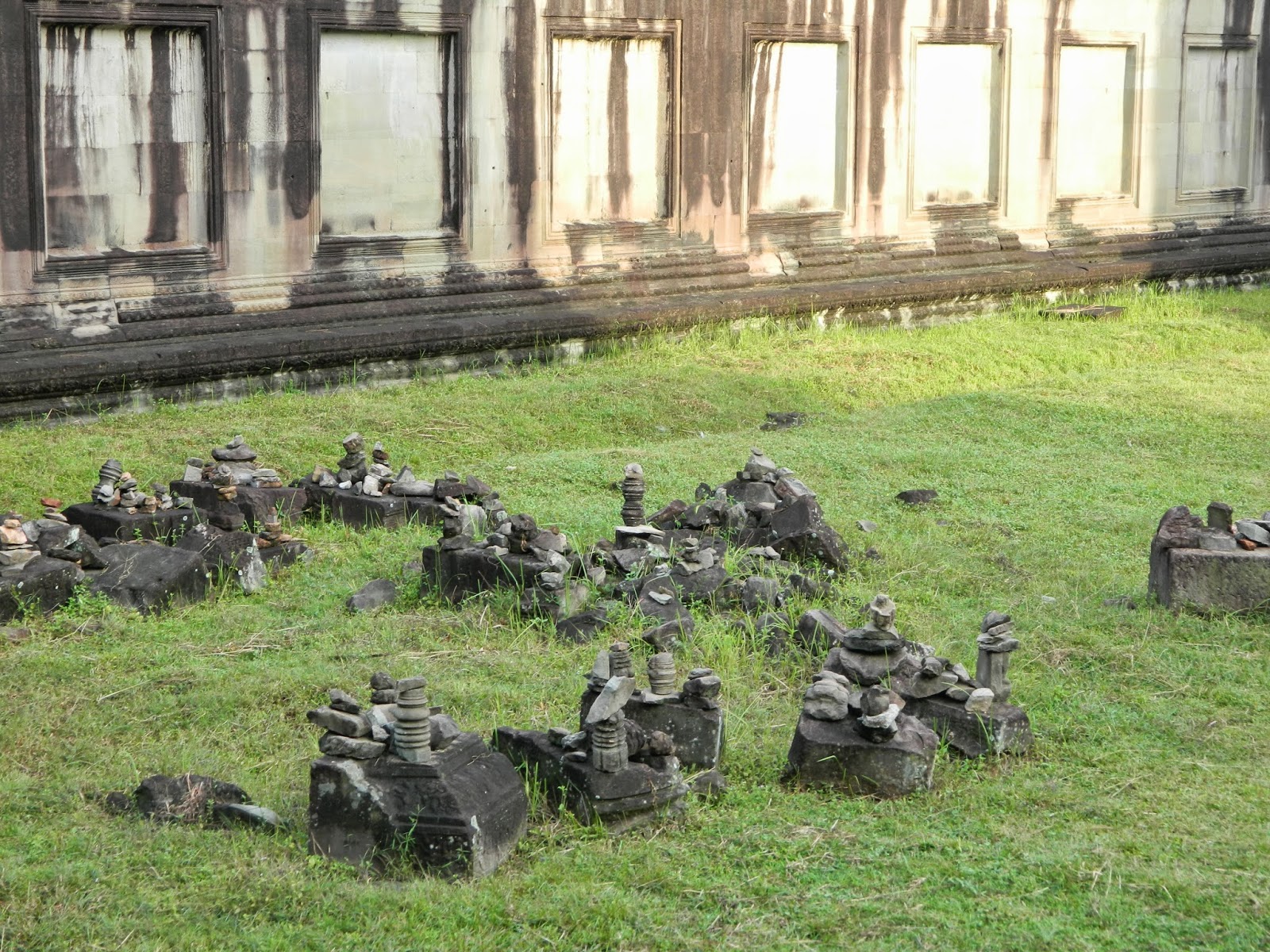 |
| Prayer stones |
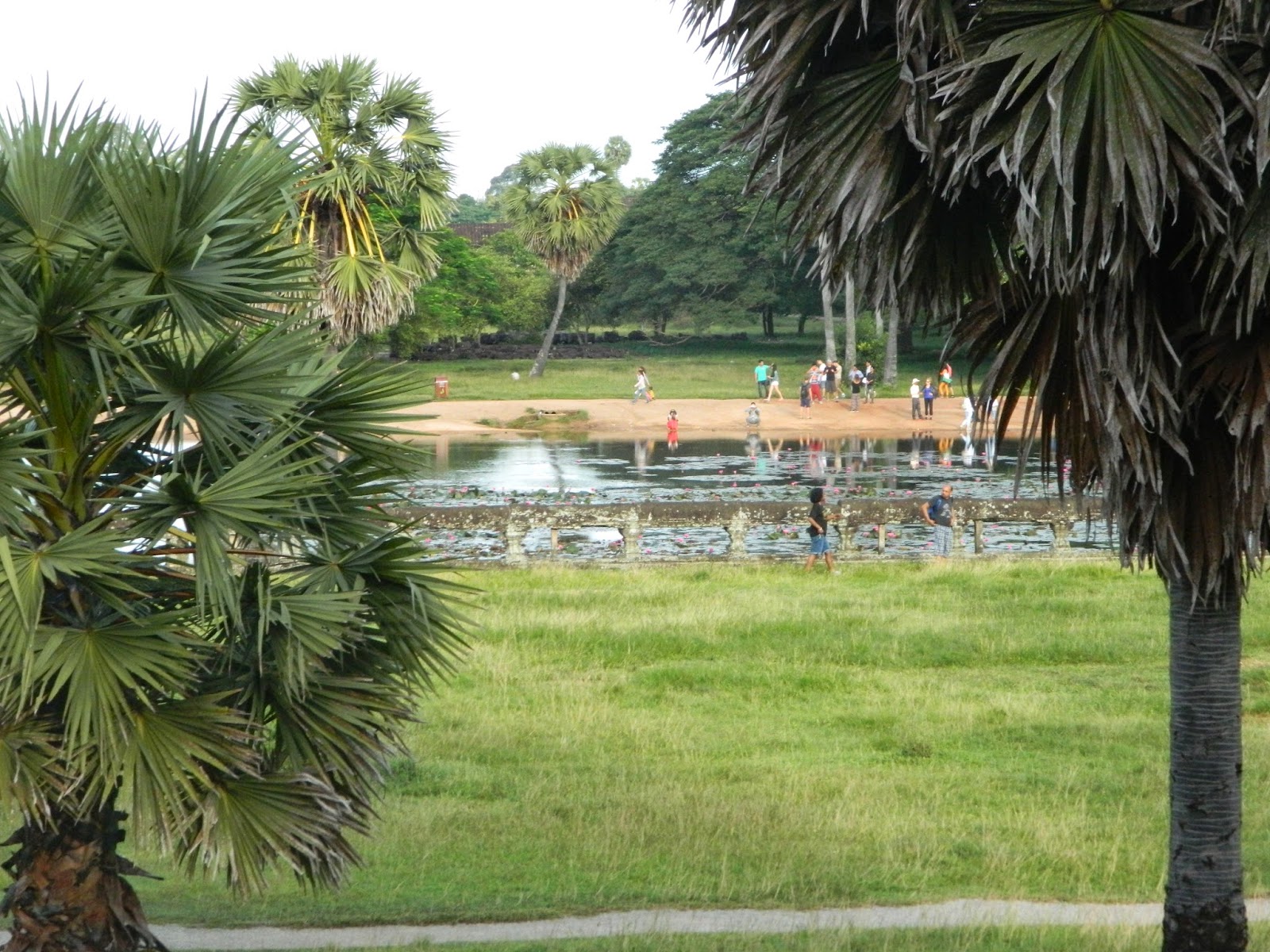 |
| Lots of lotus and lilies in the lake close to the Temple |


Recent comments